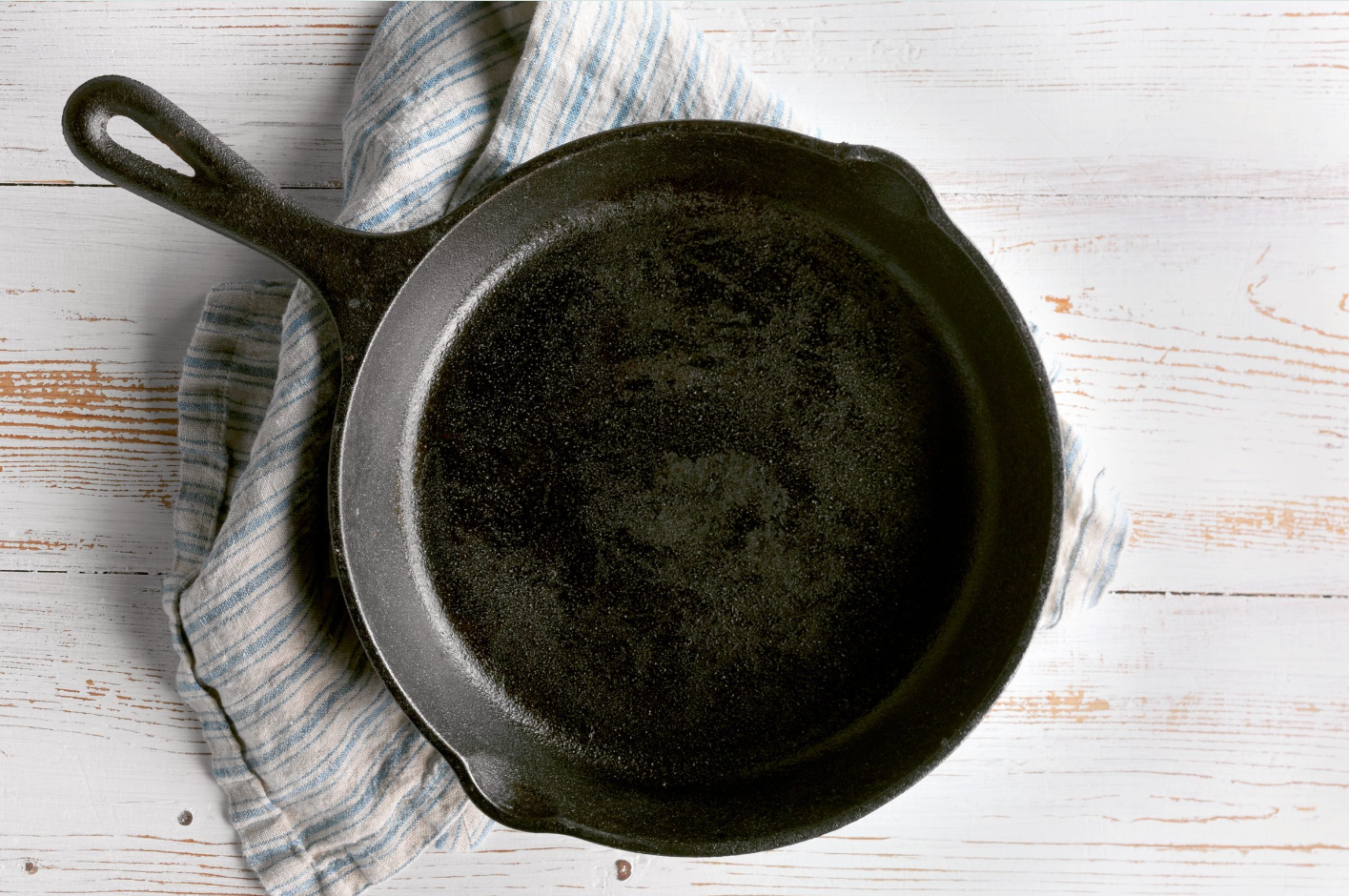One Christmas day, I received a very large cast iron skillet as a gift. I always wanted one and was joyed to receive one, but I had something much smaller and easier to handle in mind. This cast iron skillet was a heavy beast. Two things happened overtime: 1) my wrists built strength carrying it around my kitchen and 2) I ended up using this beloved skillet for 90% of my cooking with joy (I still don’t cook eggs in it). The best part about this large cast iron skillet is that it allows me to cook an entire meal in one go.
Cast iron cookware is beloved for its durability, heat retention, and ability to develop a natural non-stick surface over time. However, maintaining its season condition requires a different method when it comes to cleaning. If you’ve ever wondered how to keep your cast iron skillet at its best, look no further than your kitchen pantry. Baking soda and vinegar, two everyday household items, can be your best friends in this cleaning endeavor. Here’s a comprehensive guide on how to use them to keep your cast iron cookware in top shape.
Table of Contents
- Why Cast Iron Needs Special Care
- The Baking Soda and Vinegar Solution
- Step-by-Step Guide to Cleaning Cast Iron with Baking Soda and Vinegar
- Tips and Tricks
- In Closing
Why Cast Iron Needs Special Care
Cast iron is unique in that it requires a different cleaning approach compared to other types of cookware. The seasoning on cast iron — a layer of polymerized oil — not only gives the pan its non-stick properties but also protects it from rust. Using harsh detergents or abrasive scrubbing pads can strip away this seasoning, so gentle yet effective cleaning methods are key.
The Baking Soda and Vinegar Solution
Baking soda (sodium bicarbonate) and vinegar (acetic acid) are common kitchen staples that, when combined, can tackle stubborn grime and residual food particles. Here’s why they work so well:
- Baking Soda: This mild alkali helps to dissolve dirt and grease, making it easier to wipe away residues. Its gentle abrasiveness also helps to scrub off stubborn bits without damaging the cast iron’s seasoning.
- Vinegar: This acid helps to dissolve mineral deposits and can cut through some of the tougher, burnt-on residues. It also has natural antibacterial properties.

Step-by-Step Guide to Cleaning Cast Iron with Baking Soda and Vinegar
Materials Needed:
- Baking soda
- White vinegar
- Water
- A non-metallic brush
- Paper towel
Instructions:
- Cool Down: Ensure that your cast iron pan is completely cool before starting the cleaning process. Cleaning a hot pan can be dangerous and may warp the cast iron.
- Remove Loose Debris: Use a non-metallic brush to remove any loose food particles. Avoid using metal utensils or scrapers as they can scratch the surface.
- Create a Cleaning Paste:
- In your cast iron skillet, mix equal parts baking soda and water to create a paste. For tougher stains, you can add a bit more baking soda to make the paste thicker.
- Apply the Paste: Spread the baking soda paste over the areas with stubborn stains or residue. Allow it to sit for 10-15 minutes. The paste will help lift the grime without harsh scrubbing.
- Scrub Gently: Using a non-metallic brush, gently scrub the paste over the surface. This step helps to lift away the grime while being gentle on the cast iron.
- Rinse with Vinegar: If there are still some stubborn residues, pour a small amount of white vinegar over the paste. The vinegar will react with the baking soda, fizzing up and helping to lift the remaining residues. Be sure not to let the vinegar sit too long as it can affect the seasoning.
- Rinse Thoroughly: Rinse the pan with warm water, ensuring all the baking soda and vinegar are washed away.
- Dry Completely: Immediately dry the pan with a clean, dry paper towel. Cast iron is prone to rust if left damp, so this step is crucial.
- Re-season if Necessary: If you’ve noticed that some of the seasoning has come off during the cleaning, apply a thin layer of vegetable oil or cast iron conditioner while the pan is still warm. Wipe off any excess and place it in a preheated oven at 375°F (190°C) for an hour to re-season.
Tips and Tricks
- Avoid Soaking: Never soak your cast iron in water, as prolonged exposure can lead to rusting.
- Regular Maintenance: To keep your cast iron in optimal condition, regularly wipe it out after use with a paper towel or clean cloth while it’s still warm.
- Handle Stubborn Rust: If your pan does develop rust, a mixture of equal parts baking soda and water can be used as a paste to scrub it away. After removing the rust, re-season the pan to restore its protective layer.
In Closing
Cleaning cast iron cookware is a simple task task. With the help of baking soda and vinegar, you can effectively remove stubborn residues while preserving the seasoning and integrity of your pan. By incorporating these simple ingredients into your cleaning routine, you’ll ensure your cast iron remains a cherished tool in your kitchen for years to come. Happy cooking and cleaning!
